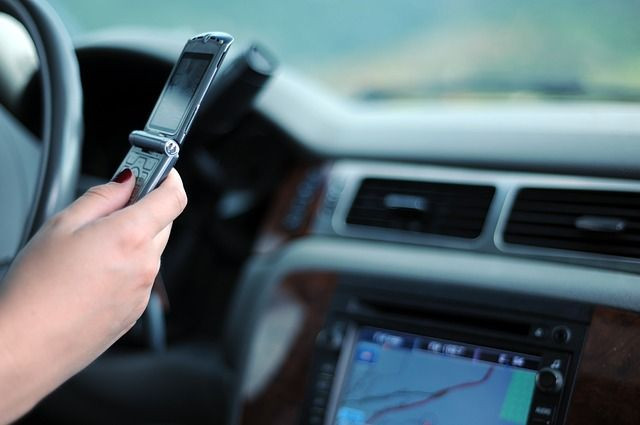Distracted Driving: Hands-Free Bluetooth Devices Could Be Just As Bad As Talking On Your Cell Phone

Drivers have been able to legally (depending on what state you live in) talk on their phones while driving since the advent of hands-free Bluetooth headsets and car systems that allow drivers keep their hands on the wheel and off their phone. So why are distracted drivers still causing more and more pedestrians deaths each year?
Researchers from the University of Sussex recently concluded a study, published in Transportation Research , in which they tracked the eye movements of people to see how distracted they could get while driving. Their findings showed that while Bluetooth devices for cell phones can keep our hands free, they may still be a dangerous distraction that could make drivers less aware of the hazards they may face on the open road.
"Conversations are more visual than we might expect, leading drivers to ignore parts of the outside world in favor of their inner 'visual world' — with concerning implications for road safety," said Dr. Graham Hole, senior lecturer in psychology at the University of Sussex, in a statement.
Hole and his colleagues conducted two separate experiments for their study, which included 48 participants who completed a simulated driving experiment wrought with hazards. For both experiments, participants were split into three groups: one that drove without distraction, one that drove while being asked to imagine the size of certain object, and one that was asked a question that did not require visualization.
The researchers found that each participant who was distracted by a question responded more slowly to hazards and detected fewer of them. Even when their eyes zeroed in on hazards, they failed to consciously notice them. Participants who were asked the questions that required them to visualize the objects did even worse at identifying these hazards. And while these were only imaginary objects, Hole noted that other forms of stimuli can hinder a driver’s attention by conjuring visual imagery as well, including passengers.
"However, chatty passengers tend to pose less of a risk than mobile phone conversations,” Hole said. “They will usually moderate the conversation when road hazards arise. Someone on the other end of a phone is oblivious to the other demands on the driver, and so keeps talking. And talking in person involves non-verbal cues which ease the flow of conversation. Phone conversations are more taxing because they lack these cues."
In their second experiment, researchers compared undistracted participants to those who were distracted by a task that required visual imagery. All the participants were shown 16 videos of driving scenes; eight contained hazards in either the central or peripheral visual field while the other eight contained no hazards. Meanwhile, they were asked true or false questions. The researchers found that those who were distracted by the questions were more likely to miss hazards in their peripheral vision, and said this was due to a phenomenon known as visual tunneling, where only objects in the center of the visual field are detected.
"Our findings have implications for real-life mobile phone conversations,” Hole added. “The person at the other end of the phone might ask "where did you leave the blue file?" causing the driver to mentally search a remembered room. The driver may also simply imagine the facial expression of the person they're talking to.”
Although Hole points out that conversations over the phone provide a more dangerous distraction than passengers, this may not always be true when the driver is a parent and the passengers are their children. In 2013, researchers from the Monash University’s Accident Research Center installed cameras in the cars of 12 families and monitored them over the course of three weeks. Their results showed that parents with kids in the car spent three minutes and 22 seconds with their eyes off the road during a 16-minute driving trip.
Source: Transportation Research. 2016.



























